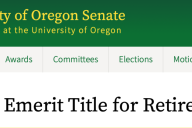You have /5 articles left.
Sign up for a free account or log in.
The higher education chief information officer role continues to evolve rapidly, struggling to keep pace with the technology innovations that are continuing to speed to market. Higher education CIOs wrestle with a long list of priorities that consume their time. Cloud computing, virtualization, teaching and learning technologies, risk management, information management and security, enterprise resource management (ERP) and customer relationship management (CRM) systems, business process improvement, disaster recovery, and on and on. With the CIO's time so consumed with information technology-related challenges, it’s no surprise that CIO succession planning typically doesn’t appear on the CIO radar screen. But should it?
The higher education CIO role emerged in earnest in the early 1990s, at a time when major technology infrastructure investments in the campus network, the integrated ERP system, and designing technology-enhanced teaching and learning spaces began to gain considerable traction across all types of higher education institutions. These early CIOs hailed largely from the baby boomer generation, holding degrees in such disciplines as math, computer science, engineering and business. Recent assessments such as the 2013 Study of Higher Education CIO Roles and Effectiveness sponsored by the Center for Higher Education CIO Studies point out that at least 50 percent of the higher education CIOs plan to retire within the next 10 years. Considering the dynamic nature of the role, and the high level of reliance on information technology services that college campuses have grown to expect and demand, it stands to reason that some preparation for this unprecedented exodus is in order.
The dearth of literature on succession planning in higher education senior management positions coupled with our own experiences to date reveal that this activity has not been a priority. About five years ago at the University of Scranton we commenced a process of succession planning to give senior leadership time to consider long-term plans by providing leadership continuity through a transition. This process was initially serendipitous to some extent since a well-defined roadmap for success couldn’t be readily identified. However, we did create a framework that included the following steps:
- Reviewing CIO position requirements.
- Identifying and analyzing knowledge gaps in the candidate or candidates who might become CIO.
- Creating a development plan to close the gaps.
- Adopting and monitoring the plan.
Once we analyzed the list of skill sets required, which can be grouped into technical, business, higher education, interpersonal, and leadership categories, we proceeded to design a group of activities to narrow the knowledge gaps. They included:
- Professional development.
- Shadowing.
- Gradual addition of IT functions including promotions and additional leadership duties jointly agreed to by the mentor and CIO candidate or candidates.
- Gradual addition of functional responsibilities.
Our work at Scranton is now largely complete and recent developments have lead us to put our plan into action. In December, Jerry DeSanto was appointed executive vice president at John Carroll University. Robyn was appointed interim vice president/CIO, giving senior leadership time to consider long-term strategies.
Our experience piqued our interest as to what was happening on other college campuses. To this end, we decided to examine if higher education CIOs were indeed actively preparing for the next generation of CIO leadership.
Our study included data gathering through a set of pilot questions asked of the Association of Jesuit Colleges and Universities’ (AJCU) CIOs. This was followed by a refined set of questions that were included in the 2013 Leadership Board of CIOs (LBCIO) annual survey of CIOs. The pilot study with the AJCU group included less than 20 responses. But, the LBCIO survey yielded over 200 responses. Finally, telephone interviews were conducted with eight CIO mentors and three deputy CIO mentees who volunteered to participate based on their actual involvement in succession planning. The triangulation of these data sources produced rich results that informed the following findings.
Is CIO succession planning a priority?
Our suspicions that few CIOs are currently involved in succession planning were confirmed. But more than half of the respondents from both surveys indicated a desire to move forward with a succession plan. For most, succession planning simply didn’t rise to a high level on the CIO's priority list. Our research shows that some institutions are beginning to examine succession planning on a broader institutional scale. With increasing anecdotal evidence suggesting that colleges’ interest in business continuity planning is heightening, some institutions are not leaving this up to the discretion of individual senior administrators.
Who is most likely to value this activity?
The data tell us that CIOs with certain leadership characteristics will likely view this activity as being critically important.CIOs like Mitch Davis from Bowdoin College seem to derive significant professional satisfaction in mentoring budding CIOs. CIOs like Davis see this activity as central to their leadership responsibilities and part of their ethos. Davis, for instance, has been known to mentor several successors simultaneously. Rebecca Sandlin, CIO at Roanoke College in Virginia, was mentored by Davis, and appreciated Davis’s encouragement to seek a CIO position elsewhere when she was ready to assume the top role. Sandlin acknowledged that Davis viewed CIO succession planning as a “contribution to the profession.” CIO Naveed Husain from Queens College of the City University of New York compared this activity to what occurs in the military where replacement officers are groomed to step into command spots. We heard that CIOs engaging in this activity must be willing to share responsibilities, have a high tolerance for conflict, be willing to spend many hours mentoring, and be capable of checking their egos at the door. Inevitably, the hard work of succession planning triggers shared responsibilities and decision-making, which dictates seeking a delicate balance between mentor and mentee. A degree of tension is to be expected, but should result in a stronger IT organization and more informed decision-making.
On what basis is the successor chosen?
We were entirely dissuaded from the notion that successors are selected based on the extent to which they mirror their mentor. The evidence suggests that mentees are being chosen based on their perceived potential to succeed in the CIO role. The selection appears to transcend gender, style, and academic discipline differences. Interestingly but predictably, many staff who may be perceived to have the right combination of traits to be mentored, have little or no interest in the senior management role of the CIO. So perceived potential must be accompanied by the ambition to sit in the CIO chair.
What kinds of activities are prevalent?
We repeatedly heard that succession planning should include exposing the mentee to leadership responsibilities like interacting with institutional senior management, leading critical high-profile projects, and assuming increasing functional and managerial responsibilities to include staff, budget, and policies. It was also evident that the CIOs must reach a comfort level with not accompanying the mentee to key meetings, etc. Demonstrating the knowledge and skill to manage and lead independently from the CIO is viewed as a key experiential threshold for the mentee. Although programs to train higher education CIOs are few, identifying knowledge gaps and closing these gaps by selectively engaging in professional development programs was seen as advantageous. Higher education CIOs are noticeably different from their counterparts in other industries. The higher education CIO must understand or adapt to academia and the higher education industry, which operates under a different set of rules and priorities. A training program for this indoctrination doesn't exist. Thus the mentoring process should include deepening the appreciation for cultural differences, and at times sensitivities associated with academic life.
How long does the mentoring activity take?
The majority of respondents to this question believe that three to five years represents a reasonable time frame for this activity from outset to completion. This depends on how wide the knowledge and experience gaps are and the amount of time and effort expended in succession planning. The question of time raises the question about what to do when the mentee is ready to take the CIO reins, but the CIO is still in place. We did observe cases where the successor has moved to another institution as the CIO -- and some might view this as a waste of the investment. In cases where the CIO role becomes vacant, institutional senior leadership is left to decide whether to follow the succession plan or not, although creating options for short-term leadership continuity are always advantageous. Ultimately, the outcome of succession planning is both unknown and unpredictable.
What did we learn?
Our own experience coupled with the research bears out that succession planning is very challenging work that requires a significant commitment of time and effort. It is not for the faint of heart — in fact one participant in the study indicated that a “tough skin” is required. The mentor and mentee must be professionally motivated to engage. The mentor must derive professional satisfaction from this activity. To be most effective, succession planning should not be solely limited to the CIO suite, but should set the stage for a culture of succession planning throughout the IT organization. Higher education is fundamentally a people business. Therefore, a distinct focus on preparing future leaders in IT as well as throughout the institution should be a mandate. The scores of higher education CIOs who are preparing to retire signals not only a changing of the guard but an opportunity for change led by the next generation. CIOs who neglect this essential leadership activity are doing their industry and legacy a disservice by not contributing to the future of the profession.








